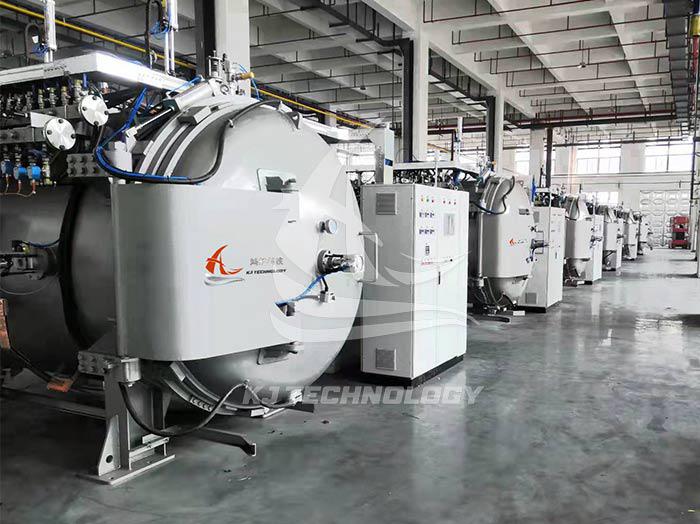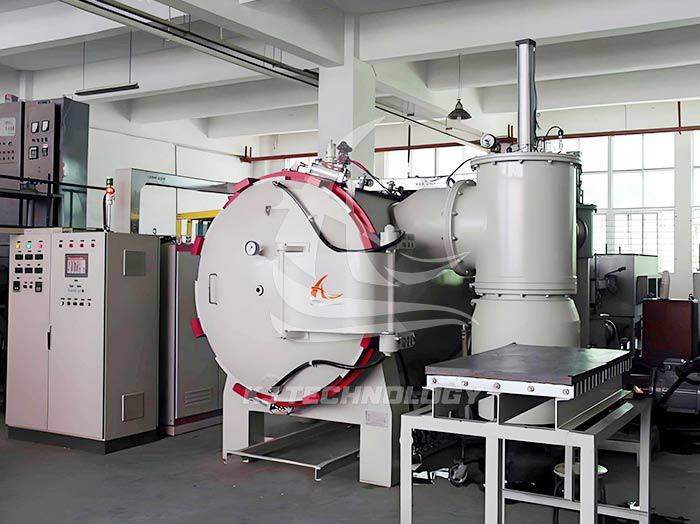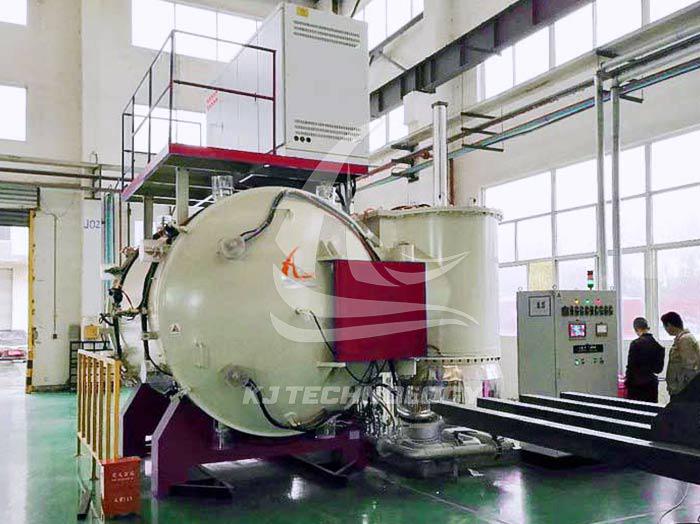Application fields of electric heating vacuum brazing furnace
 09-24-2025 Author: KJ technology
09-24-2025 Author: KJ technology
Electric heating vacuum brazing furnace plays a key role in aerospace, automotive manufacturing, electronic power, precision machinery, energy equipment and other fields due to its high vacuum environment, precise temperature control and wide material adaptability. The specific application areas are as follows:
1. Aerospace field
Core applications: Manufacturing key components such as engine blades, turbine disks, honeycomb structure wall panels, jet engines, and rocket missile device assemblies.
Technical advantages:
Vacuum environment prevents metal oxidation at high temperatures and ensures the strength of welded joints (up to 50% or more of the base material).
Suitable for lightweight and high-strength materials such as aluminum, titanium, and nickel based high-temperature alloys, meeting the requirements of weight reduction and high temperature resistance for aircraft engines.
Multiple adjacent brazing seams or components can be brazed at once to improve production efficiency.
Typical case: The stator blades of an aircraft engine compressor are connected as a whole through vacuum brazing, significantly improving structural reliability.
2. In the field of automobile manufacturing
Core applications: Production of high-performance engine components, transmissions, radiators, oil coolers, etc.
Technical advantages:
Vacuum brazed radiators have high heat transfer efficiency, compact structure, and light weight, making them an upgraded product for diesel engine coolers.
Suitable for the manufacturing of aluminum radiator cores, meeting the lightweight requirements of automobiles (such as Ford Motor Company's aluminum radiators accounting for 90% -95%).
Can weld dissimilar metals (such as aluminum copper, steel aluminum), expanding the range of material selection.
Typical case: Vacuum brazing of components such as automobile EGR (exhaust gas recirculation system) heat exchangers and plate fin titanium alloy radiators.
3. Electronic power field
Core applications: Assembling precision components such as semiconductor chips, electronic packaging, circuit boards, connectors, sensors, etc.
Technical advantages:
Vacuum environment eliminates crystal defects, improves electrical performance, and enhances chip reliability.
Suitable for connecting dissimilar materials such as ceramic metal and glass metal, meeting the requirements of miniaturization and integration of electronic devices.
AMB (Active Metal Brazing) process can be implemented to prepare ceramic copper-clad substrates with high thermal conductivity and reliability (for IGBT module packaging).
Typical case: Vacuum brazing of ceramic copper-clad laminates in power electronics technology, supporting the development of fields such as electric vehicles and rail transit.
4. Precision machinery field
Core applications: Manufacturing watches, medical equipment (such as surgical instruments, dental equipment), precision bearings, oil pump and nozzle mechanical parts, etc.
Technical advantages:
Vacuum brazing has small deformation (<0.05mm), does not require flux, avoids defects such as porosity and slag inclusion, and meets high-precision requirements.
Suitable for welding complex shaped workpieces, such as parts with narrow grooves and blind holes.
Combined with heat treatment processes such as tempering and annealing, the process flow can be simplified.
Typical case: Vacuum brazing of diamond tools (such as grinding wheels and drill bits) to improve tool wear resistance and service life.
5. Energy equipment field
Core applications: Manufacturing air separation equipment, petrochemical equipment, nuclear energy industrial components, etc.
Technical advantages:
The plate fin heat exchanger with vacuum brazing has a large processing capacity, good separation effect, and low energy consumption, and is widely used in the production of oxygen, nitrogen, and natural gas liquefaction.
Suitable for welding materials such as high-temperature alloys and heat-resistant alloys, meeting extreme environmental requirements such as nuclear reactors and gas turbines.
Transition liquid phase diffusion welding (TLP) of single crystal alloy blades can be achieved to improve the performance of aircraft engines.
Typical case: Vacuum brazing of narrow channel impellers in air separation equipment to improve manufacturing accuracy and reduce costs.
6. Other fields
Refrigeration and air conditioning: Vacuum brazing of heat exchanger core strips for household air conditioning units and electric heaters to improve energy efficiency and reliability.
Construction machinery: Vacuum brazing of components such as oil coolers and gas turbine reheaters to enhance equipment durability.
Shipbuilding industry: Vacuum brazing of plate fin oil coolers for marine diesel engines to meet the anti-corrosion requirements of marine environments.








